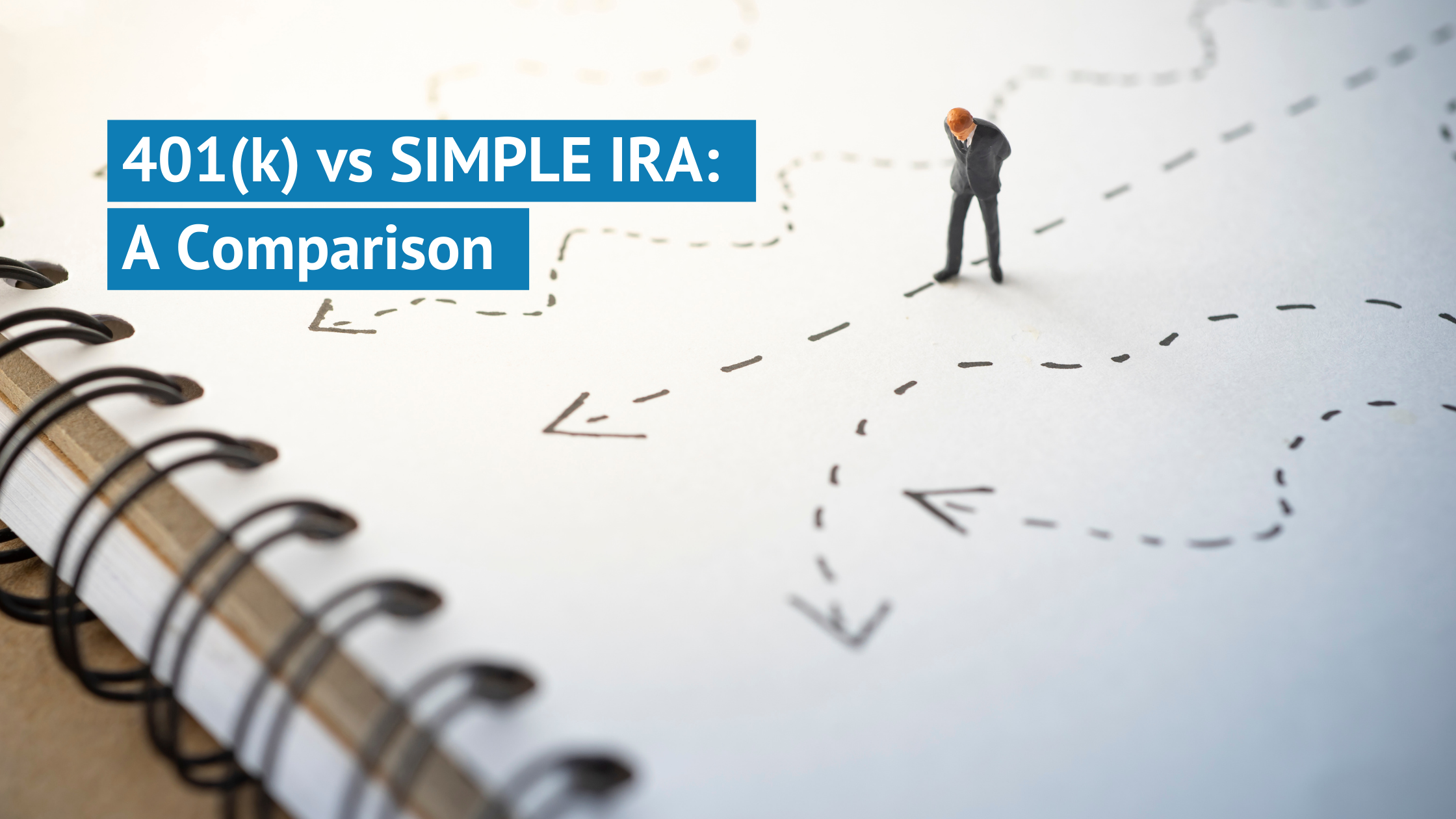Terminating a 401(k) Plan? Here’s What You Need to Know
December 12, 2022|Luke Matchett

Bottom Line Up Front
- While the IRS believes a 401(k) plan “must be established with the intention of being continued indefinitely” many business owners terminate their plans each year.
- In order for the IRS to acknowledge that your plan is terminated you must establish a termination date, cease making contributions and notify all participants, and once all assets have been distributed, file a final Form 5500.
- We recommend working with your financial advisor and actuary/TPA to terminate your plan.
According to the IRS, a 401(k) plan “must be established with the intention of being continued indefinitely,” but terminating a 401k plan is more common than you think. The IRS understands that while a 401(k) plan should be permanent, businesses face unforeseen circumstances, oftentimes outside of their control, which can lead to terminated plans.
There are many reasons that lead to terminating a 401k plan. The company may be going out of business, it could be sold to another company, or it might have decided to switch to a different plan. Regardless of the reason, once the decision to terminate the plan has been made, there are a number of regulations the company must follow.
Three Steps To Terminating a 401(k) Plan
As a plan sponsor and employer, there are three steps you must take to make sure the IRS considers your 401(k) plan terminated.
- The first step is to establish the termination date for the plan. This can be any date of your choosing, as long as the termination date or plan “freeze” date is amended into the plan document. You will also wish to have a Board Resolution to make clear the intent of the organization to freeze & terminate the plan. The plan must also be amended to reflect any law changes that will be implemented as of the plan termination date.
Filing a form 5310 with the IRS is a way to ensure that all necessary plan amendments have been made for plan termination, but it is not a necessary step. This process can be expensive and is often lengthy.
- Once the termination date has been set, it is important to cease making contributions and notify all participants that the plan will be coming to an end. All plan members who have assets are to be updated to be 100% vested. This includes participants who have been recently terminated.
It is also important to provide resources to participants that provide insight into what they can do with their distribution. Participants typically roll over their distribution into a different qualified plan or Individual Retirement Account (“IRA”) or withdraw their money in cash subject to tax withholdings.
- All of the assets are typically distributed within one year after the date of plan termination. After all of the assets have been distributed you must file a final Form 5500. It is crucial that all of the assets be distributed when terminating the plan, otherwise, the IRS will recognize the plan as an active ongoing plan. If the plan balance remains greater than zero then the IRS will not recognize the plan as terminated and must continue to meet qualification requirements. Missing the final filing of Form 5500 can result in severe penalties by the IRS and Department of Labor.
Although it may seem daunting, hundreds (if not thousands) of plans are terminated each year. Not to mention that your actuary or TPA should be able to help you along the way, completing IRS forms as well as providing final benefit calculations.
We don’t recommend taking on the task of terminating your Plan alone. While it seems simple, there are many obstacles and regulations in order to properly terminate the Plan, and failure to properly meet each step could result in significant penalties. You should consult your financial advisor and actuary/TPA.
The termination process is time-consuming and complex. In the event that you require extra assistance, our team can guide your business through this difficult process. Feel free to contact us with any additional questions.
If you’re looking for another plan, take a look at our Retirement Plan Comparison Chart.

About The Author Luke graduated from the University of Connecticut with a B.A. in Actuarial Science. He brings a strong mathematical and analytical background to his role as a Consulting Actuary at Odyssey Advisors. He designs and maintains complex client-employee benefit programs...
More Insights From This author

April 6, 2023
Luke Matchett







